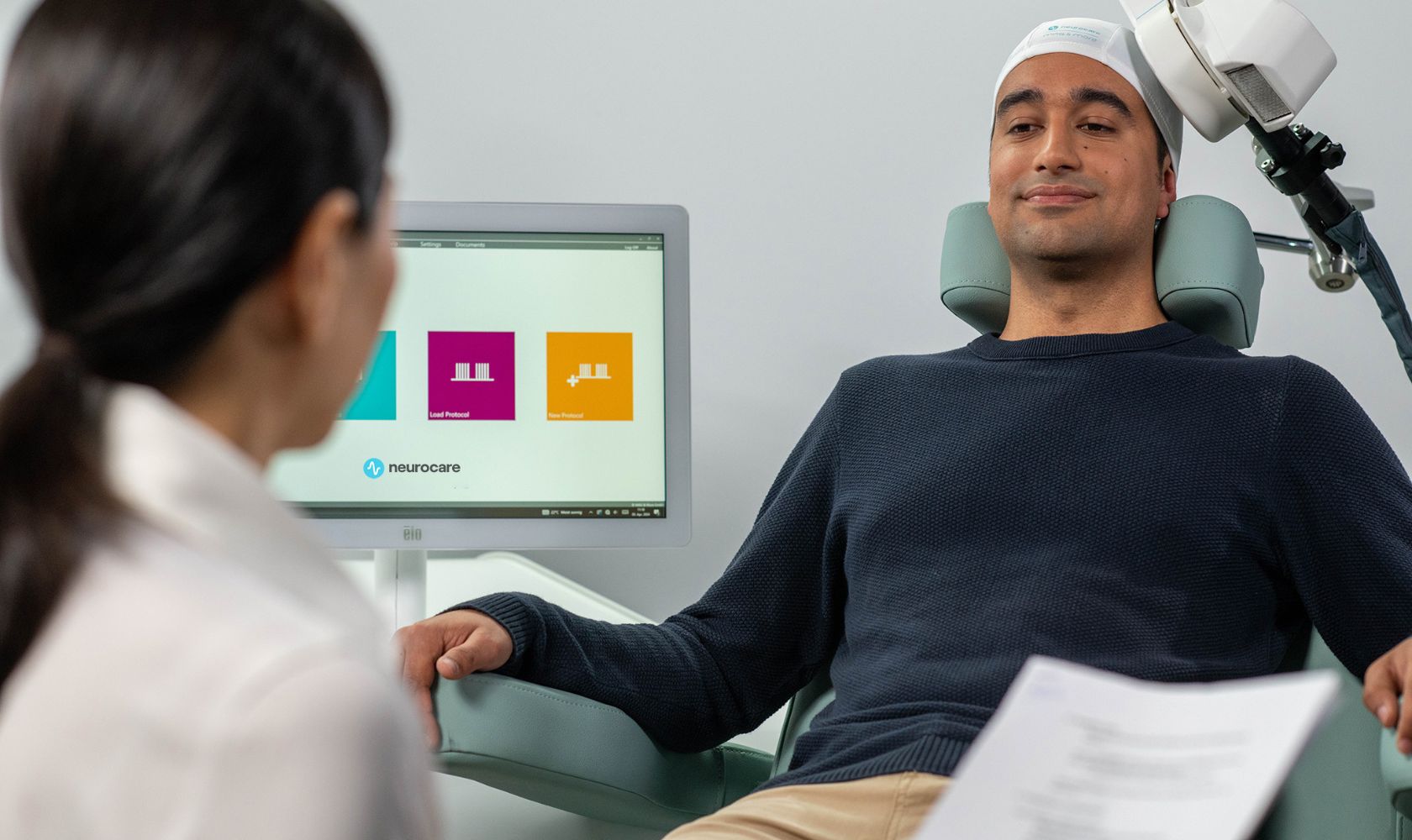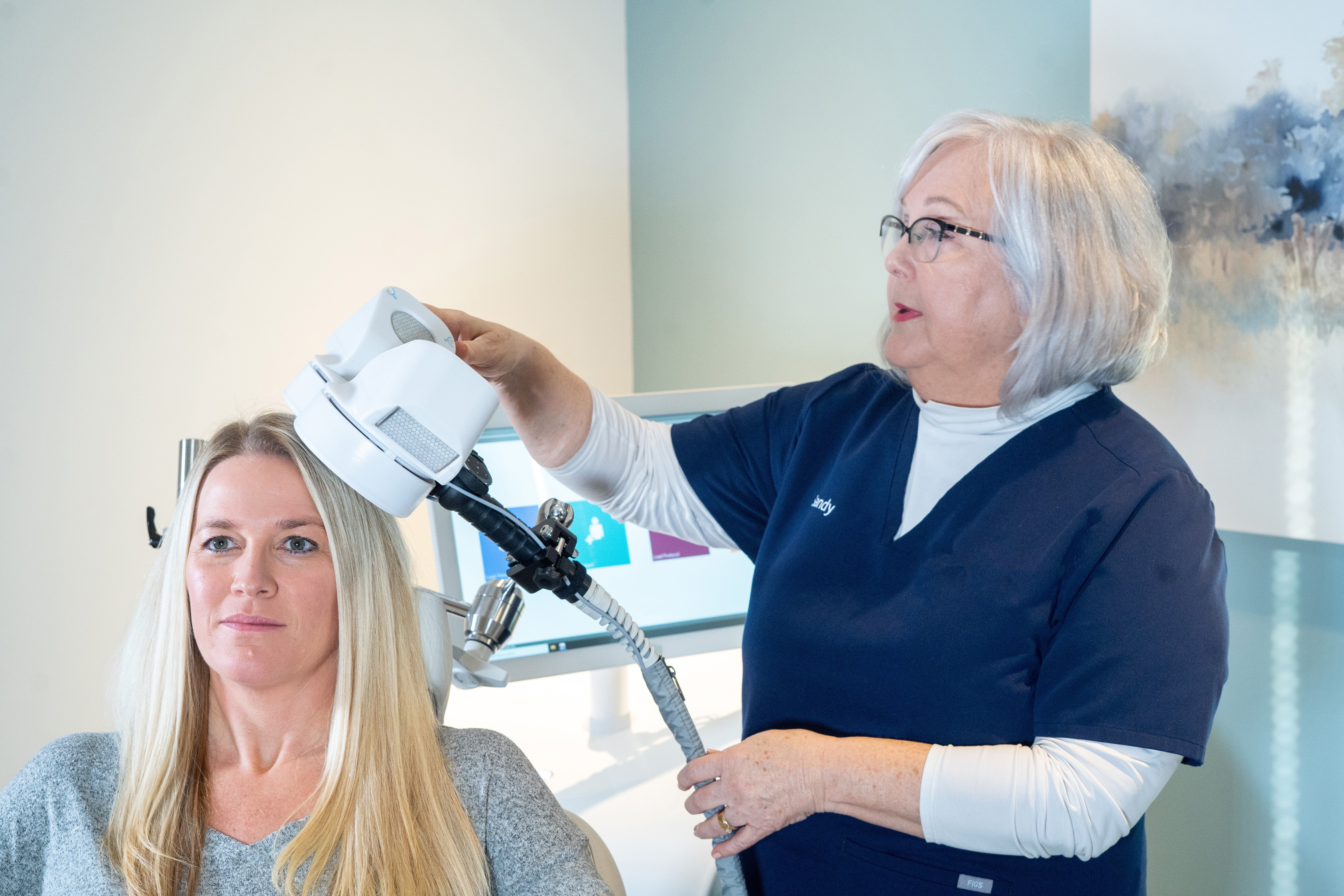Can TMS treat Long COVID? The emerging evidence
August 27, 2024 - neurocare group

For most people, COVID is an inconvenient, short-term respiratory infection like the flu. We get sick and we recover with no ongoing effects. But for an increasing number of people, the virus has never really gone away.
With a wide range of symptoms, Long COVID is proving difficult to treat in the medical field [1]. Some of the most common debilitating symptoms of Long COVID are complex and treatment resistant, including fatigue, depression, and “brain fog”. Drawing on similarities to older and more well-known conditions, practitioners are approaching Long COVID treatment as they would chronic fatigue [2]. As a result, international health authorities recommend exercise, breathing techniques, and brain training techniques (see recommendations). These techniques may be useful in the short term and can help assist people in daily life. However, some studies suggest these approaches may have limited long-term benefits for certain patients [3].
The symptom profile of Long COVID has inspired researchers globally to investigate the potential of non-invasive brain stimulation methods. Techniques like TMS and tDCS facilitate neuronal activation in the brain and are already established treatments for similar cognitive conditions.
What is non-invasive brain stimulation?
Non-invasive brain stimulation techniques involve applying a weak current from outside the scalp to change brain activity levels. Two methods of non-invasive brain stimulation, TMS and tDCS, are being investigated to treat Long-Term COVID symptoms.
TMS utilizes a gentle magnetic pulse to enhance the firing of neurons in specific regions of the brain, promoting cognitive function. By placing a special magnetic stimulation coil over the precise region on the patient's scalp, a clinician can apply brief pulses to the area that stimulates certain sections of cortex. Learn more about TMS here >
tDCS uses a weak electrical current to either activate or inhibit neuron firing in specific areas of the brain. The stable current is delivered using electrodes, placed either side of the brain region of interest. Learn more about tDCS therapy here >
Both TMS and tDCS can be used for cognitive disorders such as depression or chronic pain. Protocols can be tailored for specific symptoms, which makes them suited to the varied Long COVID symptom profiles.

What do we know about Long COVID?
At least 10% of people who become infected with SARS-Cov-2 will develop Long COVID [4]. It is associated with over 200 symptoms, but depression, anxiety, fatigue, shortness of breath, and cognitive dysfunction are most common [5]. There is not yet any way to predict which symptoms will present in a person with Long COVID.
Originally, the neurological symptoms of Long COVID were thought to result from irreversible neuron damage because the symptoms match patterns of neurodegeneration. However, some emerging research suggests that these symptoms may stem from persistent virus pockets (‘sequelae’) rather than irreversible neuron damage [6]. Recent research has shown that the immune system cannot effectively target these virus pockets, so the virus can stay present for years [7].
Treatments for Long COVID
Consistent treatment with certain antiviral drugs has been found to target SARS-Cov-2 virus pockets in Long COVID patients [8], and preliminary evidence suggests that some antiviral treatments may help reduce neurological symptoms when taken over an extended period [9].
However, at the time of writing, no effective treatment for Long COVID is available or recommended by healthcare authorities [10]. Therefore, practitioners are forced to treat the symptoms of Long COVID individually, which is challenging [11]. To speed up the recovery process, clinicians need methods to address the causes of neurological symptoms. Brain stimulation techniques such as TMS or tDCS seem promising to this end because work to improve cognitive function by targeting existing neural pathways.

TMS and Long COVID: What the research says
In recent research, people with Long COVID treated with TMS protocols consistently show improvements in cognitive function along with reductions in fatigue, anxiety, insomnia, and depression [12]. These improvements persist for at least 12 months [13]. Owing to improvements in cognitive function, one study found average increases of 10 IQ points for participants compared to control [14]. Enhanced cognitive ability in these studies has been linked to functional brain changes, observed directly using EEG [15], and linked to reduced neuroinflammation [16].
While still in the research phase, TMS may prove an effective treatment for Long COVID. Research must first identify the most effective protocol before recommendations can be made for clinics, but in time this therapy may be more widely available as research progresses.

tDCS and Long-COVID: What the research says
The emerging evidence for tDCS as a treatment for Long COVID is also promising, though still limited. Long COVID patients have seen improvements in fatigue, attention, memory, depression, verbal ability, and executive function in trials where this non-invasive brain stimulation technique has been used [17]. In multiple cases, people were able to return to work after a course of tDCS treatment [18]. Fatigue appears to be most consistently improved from tDCS [19]. tDCS may not have as clear support as TMS at this stage, since at least one study found no significant effect from tDCS compared to a control [20]. However, tDCS may prove useful as further research emerges.
Learn more about TMS therapy >
Learn more about tDCS therapy >
References
[1] Lisa Sanders, "What Is Long COVID? Understanding the Pandemic’s Mysterious Fallout"
[2] Rónan Astin et al., “Long COVID: Mechanisms, Risk Factors and Recovery; Joseph E. Herrera et al., “Multidisciplinary Collaborative Consensus Guidance Statement on the Assessment and Treatment of Fatigue in Postacute Sequelae of SARS-CoV-2 Infection (PASC) Patients”
[3] Viet Thi Tran et al., “Course of Post COVID-19 Disease Symptoms over Time in the ComPaRe Long COVID Prospective e-Cohort”
[4] Tran et al.; Maxime Taquet et al., “Incidence, Co-Occurrence, and Evolution of Long-COVID Features: A 6-Month Retrospective Cohort Study of 273,618 Survivors of COVID-19”
[5] Astin et al., “Long COVID: Mechanisms, Risk Factors and Recovery”
[6] Amy D. Proal et al., “SARS-CoV-2 Reservoir in Post-Acute Sequelae of COVID-19 (PASC)”
[7] Amy D. Proal et al., “SARS-CoV-2 Reservoir in Post-Acute Sequelae of COVID-19 (PASC)”
[8] Amy D. Proal et al., “SARS-CoV-2 Reservoir in Post-Acute Sequelae of COVID-19 (PASC)”; Lisa Sanders, "What Is Long COVID? Understanding the Pandemic’s Mysterious Fallout"; Yu Jung Choi et al., “Effectiveness of Antiviral Therapy on Long COVID: A Systematic Review and Meta-Analysis”
[9] Linda N. Geng et al., “The Use of Nirmatrelvir-Ritonavir in a Case of Breakthrough Long COVID”; Emily R German, Meera K Jairath, and John Caston, “Treatment of Long-Haul COVID Patients With Off-Label Acyclovir”
[10] World Health Organisation, “Post COVID-19 Condition (Long COVID)”; National Institute for Health and Care Excellence, “COVID-19 Rapid Guideline: Managing the Long-Term Effects of COVID-19"
[11] Lisa Sanders, "What Is Long COVID? Understanding the Pandemic’s Mysterious Fallout"
[12] Yoshihiro Noda et al., “Real World Research on Transcranial Magnetic Stimulation Treatment Strategies for Neuropsychiatric Symptoms with Long-COVID in Japan”; Nobuyuki Sasaki et al., “Effect of Repetitive Transcranial Magnetic Stimulation on Long Coronavirus Disease 2019 with Fatigue and Cognitive Dysfunction”; Mohammad Nazmus Sakib et al., “RTMS for Post-Covid-19 Condition: A Sham-Controlled Case Series Involving ITBS-300 and ITBS-600”; Ayane Kamamuta et al., “Fatigue Potentially Reduces the Effect of Transcranial Magnetic Stimulation on Depression Following COVID-19 and Its Vaccination”
[13] Natalie J. Maffitt et al., “Recovery of Neurophysiological Measures in Post-COVID Fatigue: A 12-Month Longitudinal Follow-up Study”
[14] Sasaki et al., “Effect of Repetitive Transcranial Magnetic Stimulation on Long Coronavirus Disease 2019 with Fatigue and Cognitive Dysfunction.”
[15] Lt Col Joe X. Zhang and Col Jianzhong J. Zhang, “Case Report of Improvement in Long-COVID Symptoms in an Air Force Medic Treated With Transcranial Magnetic Stimulation Using Electro-Magnetic Brain Pulse Technique”
[16] Shun Igarashi et al., “Neuroinflammatory Alterations in Treatment‐Resistant Depression Secondary to Long COVID by Repetitive Transcranial Magnetic Stimulation (RTMS): A Case Report”
[17] Stefanie Linnhoff et al., “The Therapeutic Potential of Non-Invasive Brain Stimulation for the Treatment of Long-COVID-Related Cognitive Fatigue”; Tehila Eilam-Stock et al., “Telehealth Transcranial Direct Current Stimulation for Recovery from Post-Acute Sequelae of SARS-CoV-2 (PASC)”; Andre R. Brunoni et al., “Efficacy of Transcranial Direct Current Stimulation and Cognitive Training for the Neurocognitive Symptoms of Long Covid-19”
[18] Eilam-Stock et al., “Telehealth Transcranial Direct Current Stimulation for Recovery from Post-Acute Sequelae of SARS-CoV-2 (PASC)”
[19] Stefanie Linnhoff et al., “The Therapeutic Potential of Non-Invasive Brain Stimulation for the Treatment of Long-COVID-Related Cognitive Fatigue”
[20] Monika Klírová et al., “Transcranial Direct Current Stimulation (TDCS) in the Treatment of Neuropsychiatric Symptoms of Long COVID”






